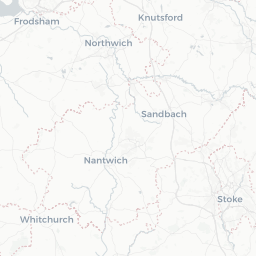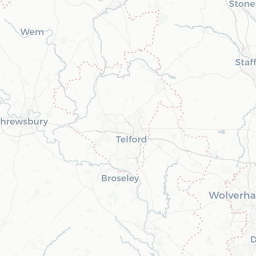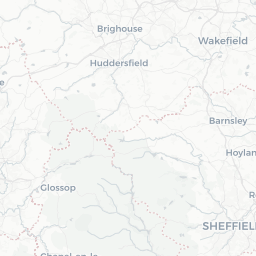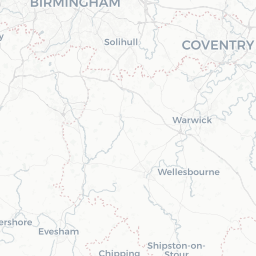N19 (London)
London Postcode Area
London, the capital of the UK, is a diverse tapestry of neighbourhoods each boasting its own charm. From the historic allure of Greenwich to the trendy cafés of Shoreditch, there’s something for everyone. Excellent transport links, including the Underground and bus services, make commuting a breeze. Enjoy cultural attractions like the British Museum or take a leisurely stroll through Hyde Park. With a mix of cosmopolitan amenities and rich history, living in London is an adventure waiting to unfold.
Overview
London (N19) postcode district is located in the ceremonial county of Greater London, and is part of the London postal town.
Located in the vibrant district of Archway, the N19 postcode boasts a diverse community with a population density of 9801.0 people per sq km. The average age of residents is 37, which is younger than the UK average of 40.7 years. The area features a mix of housing types, with 47.7% of properties being flats and an average house price of £342,500, significantly higher than the UK average of £288,000. Education levels are notably high, with 55.7% of residents holding Level 4 qualifications. Additionally, the area has a lower crime rank of 4958/32482, indicating a relatively safe environment.
















People and Demographics
Demographics
The N19 postcode area is situated in London and encompasses the lively district of Archway. The population is predominantly 63.6% White, with 8.2% Asian, 13.6% Black, and 7.8% Mixed ethnicities contributing to its multicultural character. The area is home to a youthful demographic, with an average age of 37, which is appealing for families and young professionals alike.
Unemployment
Percentage of people in London N19 who are classed as being unemployed at Census 2021.
An unemployment rate of 5% in London N19 is slightly above the UK average of 4.3%, indicating a moderate level of joblessness.
While some residents may face employment challenges, the rate still suggests a functioning local economy. Efforts to boost job opportunities could further enhance community stability and support the area's long-term growth.
Diversity
Percentage of residents in the N19 postcode region who identify as white.
With 64% of residents in London N19identifying as White, this postcode has some diversity, with a significant proportion of residents from other ethnic backgrounds.
This diversity contributes to a community that appreciates different cultures and fosters inclusivity through shared experiences and community events.
Population Growth
Population growth means that the population of London N19 is increasing by 2% each year.
Across the UK, (England, Scotland, Northern Ireland and Wales), the average population grown from 2023-2024 is 0.66%.
Children
Are under 18 years old
20% of London N19 are under the age of 18 at the time of the Census 2021.
London N19 aligns closely with the UK average of 17.4%. This indicates a balanced mix of families and other household types, with amenities catering to both children and adults.
Retired
Are enjoying retirement
15% of London N19 are retired at the time of the Census 2021.
London N19 aligns closely with the UK average of 16%, a mixed community of working-age individuals and retirees. Local amenities are likely to be diverse, and cater to both younger and older residents.
Census 2021 Demographics
Who lives and works in N19?
Analysing the N19 population's characteristics, including age distribution and cultural diversity, provides valuable insights into the composition of the community.
Population
Analysing the N19 population's characteristics, including age distribution and cultural diversity provides valuable insights into the composition of a local community.
Demographics
The N19 postcode area is situated in London and encompasses the lively district of Archway. The population is predominantly 63.6% White, with 8.2% Asian, 13.6% Black, and 7.8% Mixed ethnicities contributing to its multicultural character. The area is home to a youthful demographic, with an average age of 37, which is appealing for families and young professionals alike.
Population Growth
Population growth means that the population of London N19 is increasing by 2% each year.
Across the UK, (England, Scotland, Northern Ireland and Wales), the average population grown from 2023-2024 is 0.66%.
Children
of London N19 are under the age of 18 at the time of the Census 2021.
Retired
of London N19 are retired at the time of the Census 2021.
Gender Ratio
51% female
Gender ratio in census data means the number of males for every 100 females in a population, helping us understand the balance between men and women in a specific area.
Age Distribution
are adults
Age distribution refers to how different age groups are spread within a population, showing the number of people in each age range. This helps understand the population's structure and potential needs.
Age Distribution
"Age Distribution by 5-year bands" in the Census 2021 breaks down the population into groups based on age ranges, each spanning five years (e.g., 0-4, 5-9, 10-14, etc.). This helps to see how many people fall into each age group, providing a clear picture of the age structure in an area.
Living Arrangements
"Living Arrangements" in the Census 2021 refers to people's relationship status and how they live with others. It includes whether someone is married, in a civil partnership, cohabiting as a couple, separated, divorced, or single, and whether they live with a partner, alone, or with others.
Legal Partnership
Legal partnership status of residents in the London (N19) district, offering insights into the diversity of relationship statuses in the area. This dataset classifies residents aged 16+ in England & Wales by their partnership status.
Gender Identity
"Gender Identity" in the Census 2021 refers to how people personally identify their gender, which may or may not align with the sex they were assigned at birth. It includes options like male, female, non-binary, or other identities, reflecting how individuals see themselves.
Postcodes
Dig even deeper into the N19 postcode:
Click on an postal code below for more information about the area. Each postcode give you a comprehensive overview of the postcode neighbourhood, including address, demographics, crime, transport, amenities and house prices in London (N19).
Word Cloud for N19
We've trawled social media and the web to discover words that describe the postcode district of N19:
Nearby Towns & Cities
N19 Postcode area
The following towns and villages can be found close to London N19:
Westminster
Population 218,791
3.3 miles
Westminster, with its iconic landmarks like Big Ben and Buckingham Palace, offers a rich blend of history, culture, and vibrant city living, making it the perfect place to immerse yourself in the heart of London while enjoying a diverse range of amenities and attractions on your doorstep.
Nearest Postcode Areas:
London
Population 8,173,941
6.5 miles
The capital of England and most populous city in the United Kingdom, London stands on the River Thames, and has been a major settlement for two millennia. A metropolis of arts, culture, sport and entertainment are sure to delight all.
Nearest Postcode Areas:
Chigwell
Population 10,365
9 miles
Located in the beautiful county of Essex, Chigwell offers a blend of picturesque countryside living and vibrant urban amenities, making it a sought-after town for those looking to enjoy a high quality of life with easy access to both nature and city attractions.
Nearest Postcode Areas:
Sewardstone
Population 653
9.3 miles
Located in the historic county of Essex, Sewardstone boasts beautiful countryside views and is home to the Grade II listed Sewardstonebury Manor, a stunning example of Tudor architecture.
Nearest Postcode Areas:
Local Authorities
N19 Postal Town
The N19 postcode includes the following local authorities:
- Camden
- Islington
Crime in N19
How safe is this postcode sector?
Crime levels in the N1 postcode area have seen a recent increase, with a focus on theft, burglary, and anti-social behaviour. The local police force has been working tirelessly to address these issues and ensure the safety of residents.
Key Hotspots
Key hotspots in the N1 postcode area include areas such as Islington, Clerkenwell, and Pentonville. These areas have seen a higher concentration of crimes such as theft and anti-social behaviour in recent months.
Historical Crime Issues
The N1 postcode area has a history of crime issues, particularly with regards to theft and burglary. Over the years, there have been reports of an increase in these types of crimes, prompting the local police force to take action.
Current Policing Priorities
The current policing priorities in the N1 postcode area include increasing patrols in key hotspots, working closely with the community to gather information, and implementing crime prevention measures. The local police force is committed to reducing crime levels and ensuring the safety of residents in the area.
According to recent crime statistics, there has been a rise in theft and anti-social behaviour in the N1 postcode area. The local police force has been actively addressing these issues and working to improve the safety and security of residents.
the N1 postcode area has seen an increase in crime levels, particularly in areas such as Islington, Clerkenwell, and Pentonville. The local police force is focused on tackling these issues and prioritising the safety of residents in the area.
Metropolitan Police Police UKEducation
Highest Rated Schools in N19
As rated by Ofsted
- Yerbury Primary School
Foxham Road, London, N19 4RR
Outstanding - St Joseph's Catholic Primary School
Highgate Hill, London, N19 5NE
Outstanding - The Bridge Satellite Provision
Duncombe Road, London, N19 3DL
Good - Duncombe Primary School
Sussex Way, London, N19 4JA
Good - St Mark's CofE Primary School
Sussex Way, London, N19 4JF
Good - Hargrave Park Primary School
51 Bredgar Road, London, N19 5BS
Good - Brookfield Primary School
Chester Road, London, N19 5DH
Good - St John's Upper Holloway CofE Primary School
Pemberton Gardens, London, N19 5RR
Good - City of London Academy, Highgate Hill
Holland Walk, Duncombe Road, London, N19 3EU
Requires improvement

Unlock the full power of postcode insights.
Data is meaningless without context. Reveal the stories behind a neighbourhood, and make smarter decisions with data you can trust. Gain unlimited access to detailed statistics, exclusive reports, and essential tools.
PostcodeArea is grateful to our sponsors for their support.






